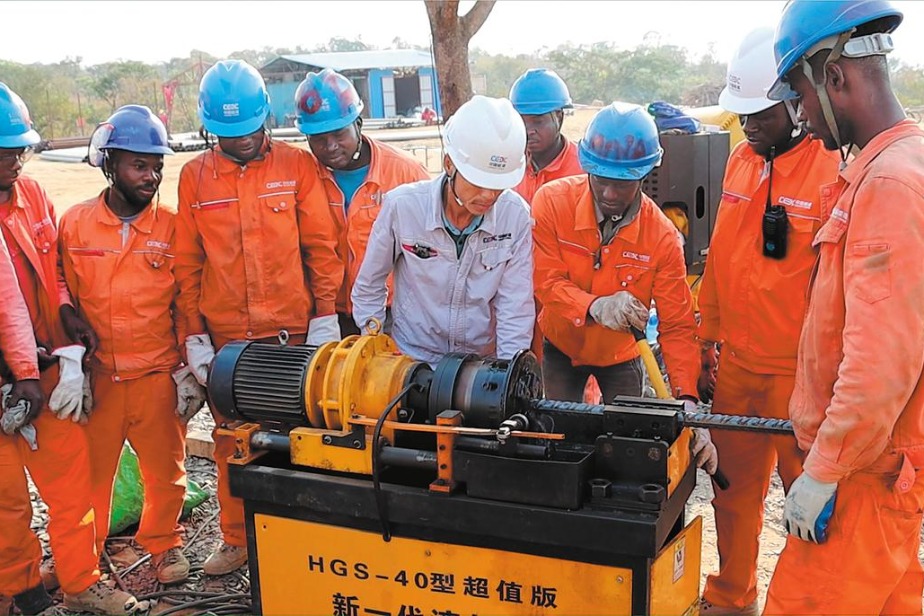HK at the forefront of central bank digital currencies


Oriol Caudevilla says collaborative projects allow the city to enhance its status as one of the world's most important financial centers
The Hong Kong Monetary Authority (HKMA), along with the Bank of Israel (BOI) and the Bank for International Settlements (BIS) Innovation Hub Hong Kong Centre, announced the publication of a joint report titled "Project Sela - An accessible and secure retail CBDC ecosystem", at a launch event in Tel Aviv on Sept 12. This marks the first-ever collaborative project between the HKMA and the BOI on the fintech front.
As per the HKMA's news release on this topic, Project Sela demonstrated the technical feasibility of a retail central bank digital currency (CBDC) architecture that can promote competition and innovation in digital payments by allowing nonbank payment intermediaries to connect directly to the CBDC ledger of the central bank. Leveraging distributed ledger technology, a proof-of-concept prototype was developed to showcase how the technical implementation of the proposed architecture can incorporate strict cybersecurity, legal and policy requirements.

As told by Howard Lee, deputy chief executive of the HKMA, "This project provided valuable practical insights into the cybersecurity, technical and policy aspects of a retail CBDC implementation. While the HKMA has not yet made a firm decision on whether and when to introduce an e-HKD in Hong Kong, the outcomes of Project Sela will inform our ongoing exploration. We hope that Project Sela will also benefit other central banks in their own evaluations of different retail CBDC architectures."
An e-HKD is a CBDC. CBDCs have been referred to as "the future of payments", or even "the future of money", and not without reason. Hong Kong, once again, is at the forefront of this.
A CBDC is a new form of central bank money accessible to the public, accepted as a means of payment, legal tender, safe store of value by all citizens, businesses, and government agencies. There are many possible motivations behind CBDCs: They can replace physical notes; they can be used to improve financial stability as a monetary policy tool, to promote financial inclusion, to fight against financial crime, improve payment efficiency and reduce intermediary risks, etc.
However, while the introduction of CBDCs promises a variety of efficiency savings and new functionalities, it is important to remember that it does not solve all the problems of payments - particularly cross-border payments - on its own.
Project Sela is one of several CBDC projects that the HKMA has been involved these last few years, such as the digital yuan (its tests in the special administrative region), the mBridge Project and the electronic Hong Kong dollar (e-HKD), as I have explained in several articles published in China Daily Hong Kong Edition.
Indeed, the HKMA began researching CBDCs under ProjectInthanon-LionRock in 2017 (Project LionRock involved the HKMA and the Bank of Thailand) and has since collaborated with other central banks in broadening their knowledge of wholesale CBDCs.
Project LionRock was renamed mBridge, becoming a joint project of the PBOC, the HKMA, the Bank of Thailand, the Central Bank of the United Arab Emirates, and the BIS Innovation Hub Hong Kong Centre. It has been a closely watched experiment as the only large-scale use of blockchain to settle international payments.
The HKMA has also been working on its own CBDC, the e-HKD.
Related to this, Eddie Yue Wai-man, the chief executive of the HKMA, hosted a ceremony on May 18 to mark the start of its e-HKD pilot program, with 16 companies to test the digital currency for public use in shop, restaurants and money transfers.
In total, 16 banks and payment companies will select small groups of clients to test six potential uses for the e-HKD - online payments; payments in shops and restaurants; collecting government payouts; tokenized deposits; tokenized asset settlement; and Web3 trading and clearing, according to a statement by the HKMA. The program is a key component of Rail 2 under the HKMA's three-rail approach in paving the way for the possible implementation of a retail CBDC, i.e., e-HKD, in a future program.
The e-HKD will be an electronic version of a bank note, and the mechanism of issuing the digital currency will be the same as that for physical bank notes under the currency peg system, without affecting the monetary base. The existing Hong Kong dollar peg with the US dollar will remain in place.
This announcement follows the Fintech 2025 strategy unveiled in June 2021 by the HKMA, whose second strategic pillar was for the HKMA to strengthen its research work to increase Hong Kong's readiness in issuing CBDCs at both the wholesale and retail levels.
Fintech 2025 seems consistent with Hong Kong's current role as a global fintech and trading hub. Indeed, Hong Kong's future is not so much about remaining as the gateway to the mainland but about keeping and enhancing its current status as one of the world's most important financial centers by adopting the very economic initiatives that are relevant to the development blueprint for the Guangdong-Hong Kong-Macao Greater Bay Area.
In that sense, Fintech 2025 is aligned with the 14th Five-Year Plan (2021-25) for National Economic and Social Development and the Long-Range Objectives Through the Year 2035, which recognized Hong Kong's economic potential at the national level.
Hong Kong will not walk alone in this area, since the fintech scene on the Chinese mainland is developing very fast too. In this sense, Hong Kong (and Macao, to a lesser but very relevant extent) can undoubtedly play a vital role in China's fintech scene, given Hong Kong's current position as one of the most important financial centers in the world and given that its fintech industry has the potential to develop much faster now that it can leverage its involvement in the Greater Bay Area blueprint.
To sum up, not only is Hong Kong in a perfect position to leverage the digital yuan's future deployment to enhance its status as one of the world's most important financial centers - it is also in a perfect position to explore the possibility of an e-HKD as well, showing once again that the HKMA and therefore Hong Kong are at the forefront of the CBDC race. At the same time, Hong Kong, through the HKMA, is in a perfect position to keep exploring more CBDC projects such as Project Sela.
- High-tech, new energy products buoy trade
- Global experts discuss leveraging oasis biosphere reserves to empower sustainability in arid lands
- Para rowers: We shine together
- Xi attends grand gathering in celebration of Xinjiang Uygur autonomous region's 70th founding anniversary
- Xinjiang breaks 2t yuan GDP mark in 2024
- Xinjiang's ice & snow tourism hits new heights





































